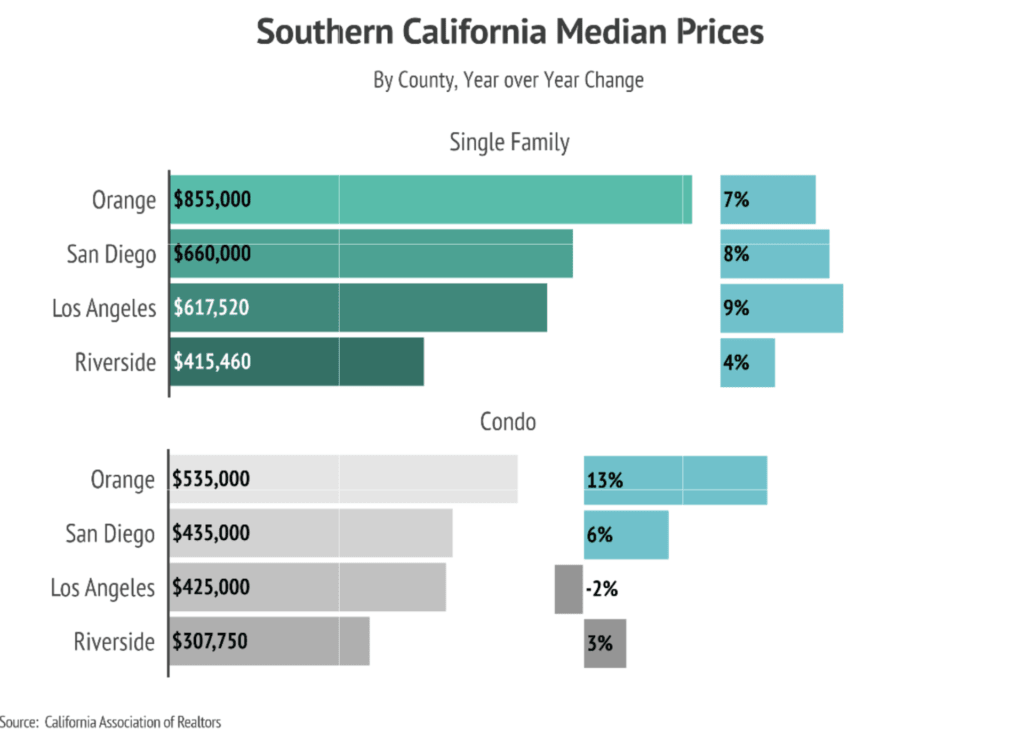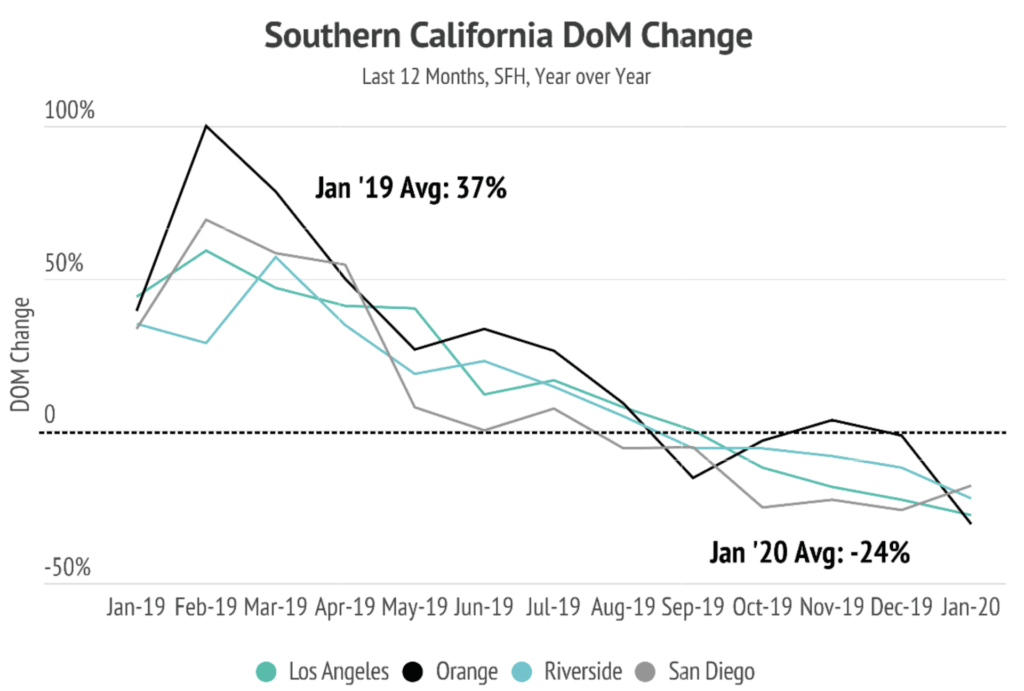Palm Springs Market Update March 2020
A Message from Our Family to Yours
We hope this message finds you healthy. In unprecedented times like these, it’s important to band together and support one another. Our team is committed to continuing to serve all your real estate needs while incorporating safety protocols to protect all of our loved ones.
We also want to assure you that of all investments you can make, real estate has historically proven to be the best asset you can own in the long-term. As we all navigate this together, please don’t hesitate to reach out to us with any questions or concerns. We’re here to support you.
– Neil Curry, DRE #01863952
Our March newsletter will review the latest news and trends impacting the Southern California housing market and give you a local market update. This month’s topics include:
- Three News Stories Impacting Your Local Market: COVID-19 continues to make global news, the stock market falters, and the Federal Reserve (Fed) cuts its benchmark interest rates.
- Housing Market Update for the Southern California Housing Market: Home prices trend upward, months supply of inventory tightens, sales-to-list price ratios tick up, and days on market continues to fall compared to last year.
Three News Stories Impacting Your Local Market
The coronavirus continues to affect local and national markets. The spread of COVID-19 has government entities around the world, as well as global markets, facing uncertainty. The situation is impacting the real estate market in two key ways.
-
Quarantines, travel bans, and supply chain disruption may cause a 2020 recession. If this happens, food service, travel, and entertainment are expected to be hit the hardest. To minimize potential impact, the U.S. government is working on a $1 trillion stimulus package, anticipated to include funding for distressed sectors of the U.S. economy, backing for small businesses, and providing direct payments for American citizens. Some areas have put shelter-in-place regulations into effect. If you have any questions about how this could impact your buying or selling process or real estate transaction, please contact us. We’re happy to answer any questions you have.
- Travel bans are impacting international buyers. Although travel bans are increasing across many nations, the Chinese travel ban could have the largest effect on the US real estate market. MarketWatch reports that Chinese buyers are typically the largest group of foreign purchasers of U.S. residential real estate, and nearly 40% of those purchases happen in California.
We’ll continue monitoring the impact of COVID and will keep you up to date on how it’s impacting our local market. It’s important to remember that real estate is a much more durable investment than most, even in trying and uncertain times.

The stock market falters. The longest-running bull market in history ended in February 2020 due to uncertainty around COVID-19. Both the
Dow Jones Industrial Average (Dow) and the
S&P 500 indices peaked in February, on the 12th and 19th respectively.
As of March 13, the Dow lost 22% of its value from its peak one month earlier. The S&P 500 followed a similar path and is down 20% from its peak. On March 12, the Dow had its worst trading day since the 1987 crash, triggering the second trading halt in one week.
In the midst of this news, it’s important to recognize that the S&P 500 increased over 330% in the last 11 years. All of that wealth has not been lost over the last month.
Interest rates move to zero, and the Fed begins quantitative easing. While we’re experiencing unprecedented events socially and economically, federal interest rate cuts and quantitative easing has created an opportunity for buyers eager to enter the market.

In response to the Dow falling, investors pulled their money out of the stock market and moved it into safer U.S. Treasury bonds, causing interest rates to drop. On March 3, the Fed cut interest rates by 50 bps. On March 15, the Fed stepped in again, cutting the federal funds rate to zero. In the coming months, the Fed will purchase $1.5 trillion in U.S. Treasury securities as well as several hundred billion in mortgage-backed securities. This process of quantitative easing, which increases the money supply, was last used in the 2008 financial crisis in an effort to encourage lending and investment.
Lower rates will encourage current homeowners to refinance and potential buyers to enter the market to take advantage of the cheap financing opportunities. In this climate, investments in real estate will potentially increase, driving prices higher as investors allocate capital away from stocks
Looking ahead, we expect an increase in volatility in stocks and bond yields to dip lower and lower as quantitative easing progresses. An investment in real estate may actually be the best allocation at this time.
Housing Market Update for Southern California
Median home prices have been trending upward since summer 2019 due to low-interest rates and a period of economic expansion. The stock market hit all-time highs in the third week of February before pulling back considerably.

In January, median home prices increased across all counties. In general, appreciating prices signal a healthy demand for housing and encourage sellers to price their homes slightly above comparable.

Condo prices, which historically have fewer sales and greater volatility, show mixed results, but prices are trending lower in some counties from the previous year. This signals that buyers are placing a higher premium on single-family homes.
Months supply of inventory measures how many months it would take for all current listings on the market (including listings under contract) to sell at the current rate of sales. In California’s high-demand market, a balanced supply level is three months, which means there are three months of housing inventory on the market at the current rate of sales. A market with less than three months supply of inventory favors seller
In January of this year, supply levels in Southern California averaged 3.4 months, a sharp drop from the inventory levels of this time last year. This trend is caused by more buyers entering the market since the beginning of 2019 to take advantage of low-interest rates. Lower levels of supply should prop up home prices further.
In January, most markets sold at a slight discount to the original list price. This means sellers should be prepared to knock a point or two off the listing price to get a deal done. The pricing trend indicates the Southern California market is well balanced.
Days on market (DOM) measures how many days it takes from the first day of listing for a seller to accept an offer. The Southern California housing market spent much of the last 12 months moving slower compared to the previous year. It finished in January down an average of 24%. San Diego saw the lowest days on market, while Riverside took notably longer.


Looking ahead, we believe lower interest rates will continue to benefit buyers, and supply levels will shrink even further as buyers continue to have access to more favorable financing.
Current rates are so low that 9.4 million borrowers could save an average of $272 per month if they were to refinance to a lower rate (Black Knight). Approximately three million homeowners who took out mortgages in the past three years now could save 0.75% or more on their mortgage rates. That’s a collective $2.6 billion per month—the highest potential savings in twenty years.
As always, we remain committed to helping our clients achieve their current or future real estate goals. Our team of experienced professionals would love to discuss all the information we’ve shared in this newsletter. We welcome you to contact us with any questions about the current market or to request an evaluation of your home or condo.















